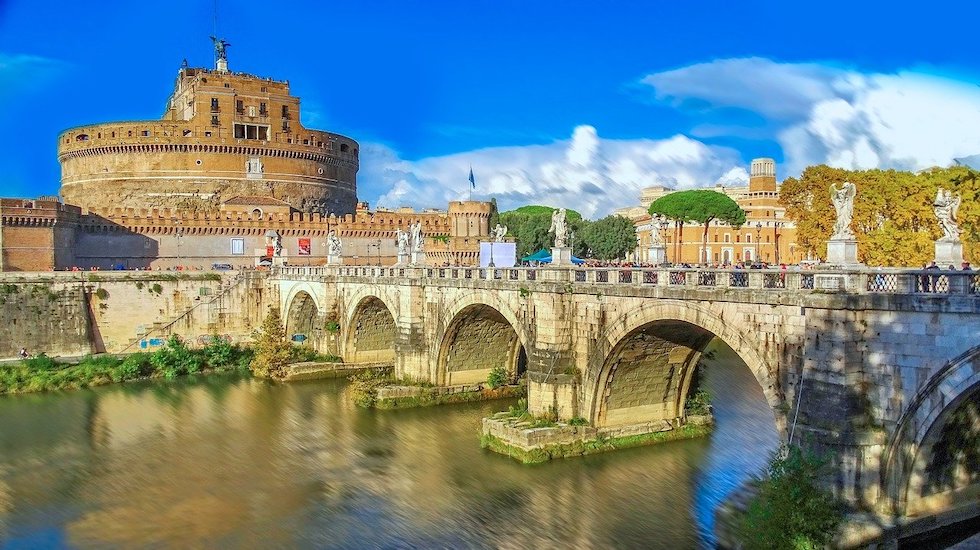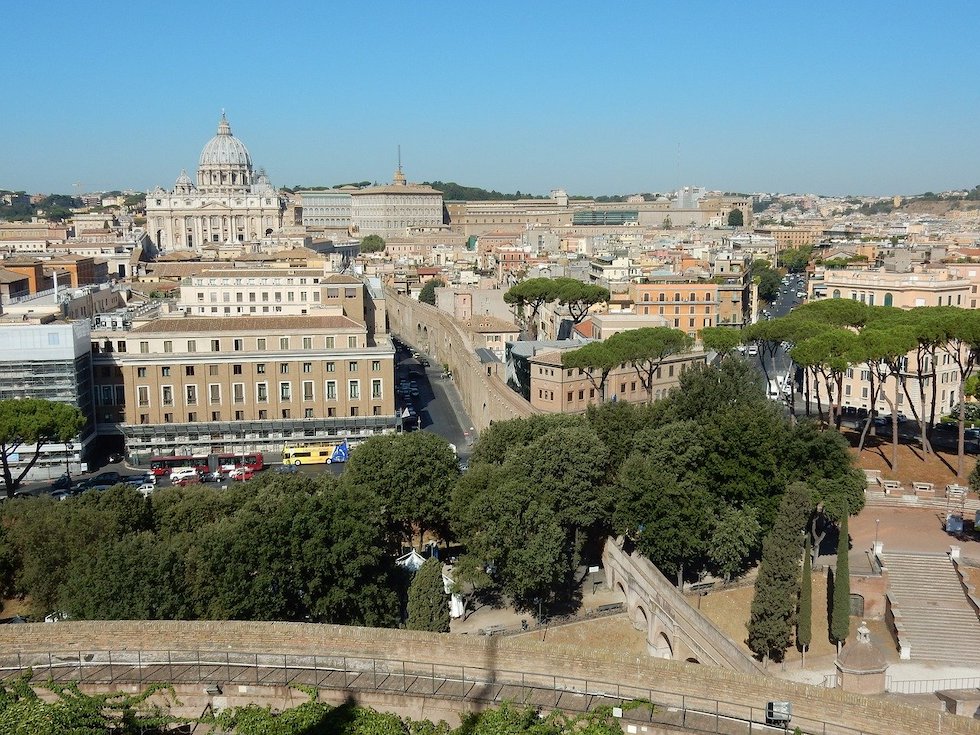Located in Rome between the Prati and Borgo districts, we find one of the most famous monuments of the capital, Castel Sant’Angelo, also known as Hadrian’s Mausoleum. Located on the right bank of the Tiber, opposite the Ponte Sant’Angelo is very close to the city of the Vatican, in fact it is connected to it through “the Passetto”, a fortified corridor of which we will speak later.
The history of Castel Sant’Angelo
Originally built as a tomb for Emperor Hadrian and as a mausoleum for the Antonine family, it was transformed into a fortress, included in the Aurelian walls for the defense of the city. From there it took the name “castellum”, to which was added, in the early Middle Ages, that of Sancti Angeli from the legend of the vision of the archangel Michael.
According to tradition, the monument was given its current name in 590.
Since Rome was afflicted by a severe plague, Pope Gregory I decided to organize a solemn penitential procession. While the Pope, leading the procession, was crossing Ponte Elio, he had a vision of the archangel Michael sheathing his sword at the top of the Mole Adriana: this was interpreted as a celestial sign announcing the imminent end of the epidemic, which indeed happened. From then on, the Mole Adriana was known as Castel Sant’Angelo: a church was erected on its top, dedicated to ‘Sant’Angelo usque ad caelos’, and in the 13th century a statue of the angel sheathing his sword was erected. A circular stone with footprints is still preserved in the Capitoline Museum. According to tradition, these are the footprints left by the Archangel when he stopped to announce the end of the plague.
The castle has been subjected to numerous renovations and refurbishments to meet the changing needs of different historical periods. The most extensive work was carried out when Pope Urban V took possession of the castle in 1367 as a condition for the return of the curia to Rome. The pentagonal walls and bastions were built, and “comforts” were added to adapt them to the “princely” needs of the curia.
Later it was used as a political prison and took the name Forte Sant’Angelo.
After the unification of Italy it became a military barracks, and in 1925 it became the National Museum.
Passetto di Borgo: a secret path connecting the Vatican to Castel Sant’Angelo
The most interesting part of our journey inside the castle is the ‘Passetto di Borgo’, a raised walkway about 800 m long connecting the Vatican to Castel Sant’Angelo. Its construction began in 1277 at the request of Pope Nicholas III and it was actually used several times in the following centuries.
The two most famous episodes are when it was used by Pope Alexander VIII who used it to escape into the castle during the invasion of Charles VIII of France and when Clement VII escaped from the Vatican during the sack of Rome by Charles V’s Lansquenets.
Finally in 2000 the passetto was restored and open to the public and today is visitable just with a guided tour of Vatican city.
Castel Sant’Angelo Tickets
If you want to visit this amazing monument and discover all its secrets, the cost for the visit is 12 euros for adults and free for children.
A very reasonable price to increase your knowledge, isn’t it?
Basically, Castel Sant’Angelo is a must-see in Rome, and you certainly can’t go home without seeing it.
Also, we’ll tell you a little tidbit if you’re a film buff, try watching Dan Brown’s “Angels and Demons” and let us know if you recognise any of the locations in the movie…



